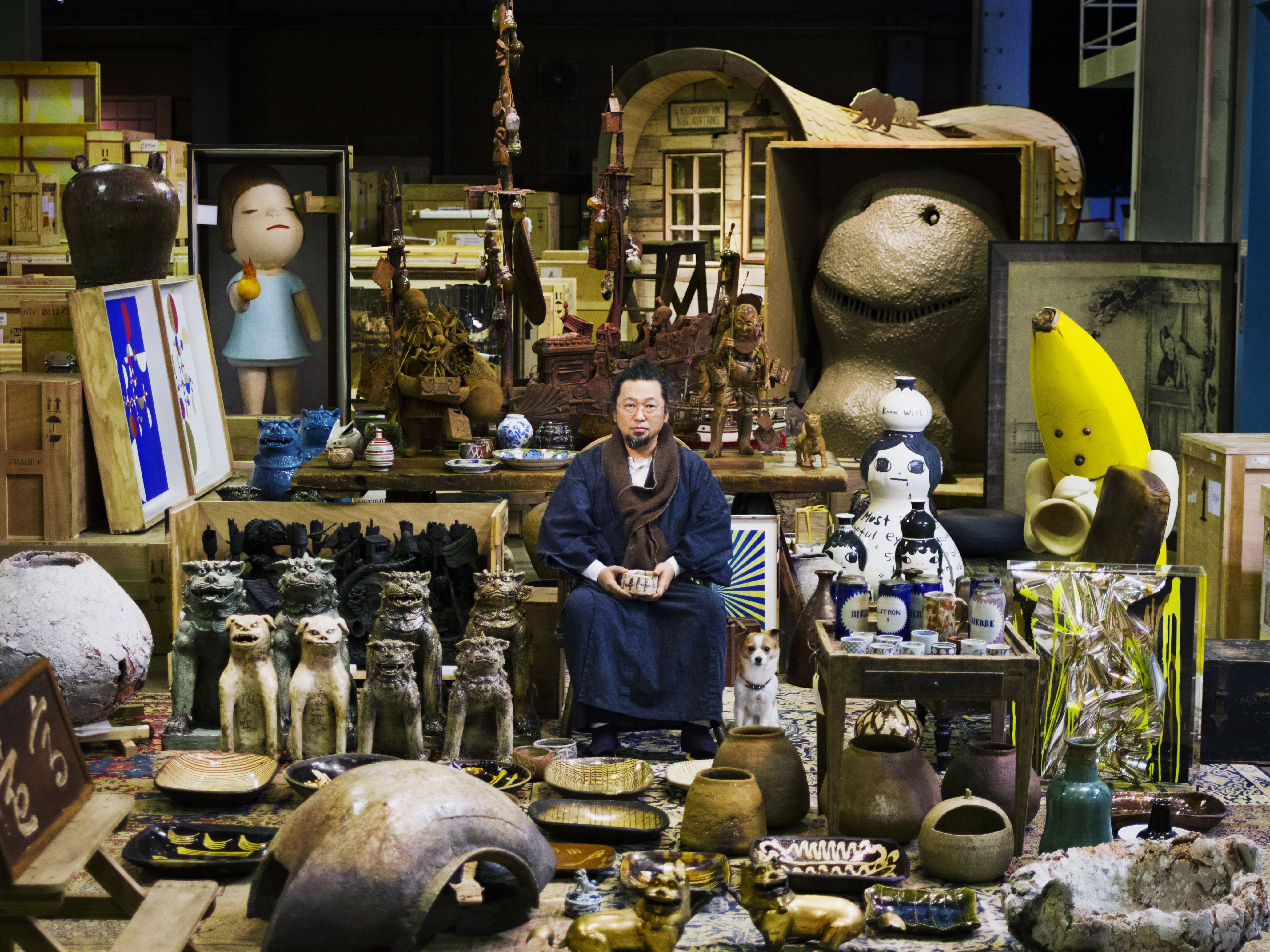"Takashi Murakami's Superflat Collection" is an exhibition of other people's work, amassed as the result of one man's phenomenally successful artistic career. It's evidence that Murakami must have done something right, or wrong, depending on your view of culture. He's sometimes portrayed as a kind of evil genius, presiding over the end of both Western civilization and Japanese tradition.
During an interview to discuss this excursion into curating, he is tired but happy, and at times I can't tell if he is deep in thought or dozing off. His staff tell me that he hasn't slept much in the three days before the opening. I ask if he needs an energy drink, but he says he has to avoid sugar since he has gout. We have a conspiratorial laugh over the fact that we've both been advised to give up beer. Channeling Okakura Tenshin, the turn-of-the-century Japanese scholar who did his best to combat Western modernity promoting the tea ceremony, "Japanese-style" painting and wearing old-fashioned scholarly garb to work, Murakami is dressed in a loose kimono-style robe, and his beard has gone from beatnik to Oriental-sage length.
It's the first time that Murakami has been able to see his own collection displayed properly; he gives the impression that it's usually piled high and deep in storage. His "connoisseurship" is not based on buying up canonical pieces, but more akin to the wanderings of Wall-E, picking through the artefacts of modern life, hoping that if enough data is amassed it may be possible to better understand the human condition.



